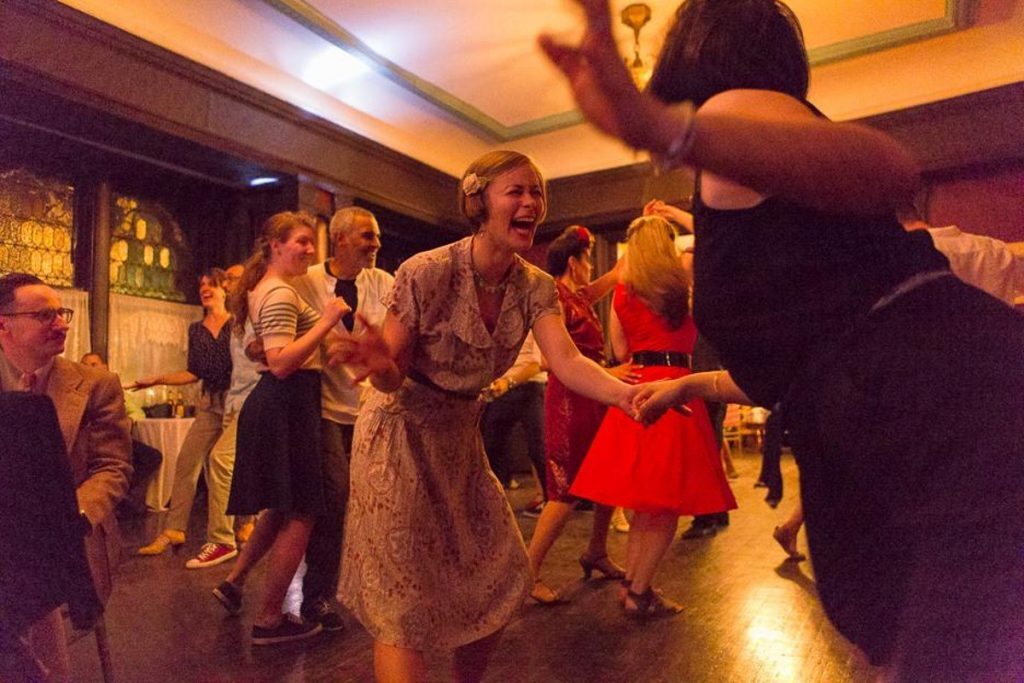Swing dance instructors, like other kinds of teachers, should be a nurturing, accommodating influence. The needs of the student should come first and the expert should be receptive to the ideas of the novice. If swing dance teaches anything, it’s mutual respect and empathy; we’re all on a learning journey, after all. As such, there perhaps shouldn’t be any unreasonable demands an eager student could make of their tutor; requests likely to outrage, and which should be met with uncompromising rebuttal…but there are.
Two demands I previously pandered to, but which I now generally refuse, are these: firstly, “I only want to dance with one partner” and secondly, “just teach me a sequence of steps.” These ideas should—I have unilaterally decided—be unconscionable to swing dance instructors. At best, they should be vehemently opposed; at worst, they should be permitted only temporarily, as a soft entry into swing dance and only during private classes.
It’s not a power play, nor is it to make anyone’s life more difficult or less fun. Rather the opposite: it’s a stance intended to preserve the unique essence of swing dance and increase everyone’s enjoyment thereof. (I should qualify this by saying that choreographed exhibition pieces, usually performed by professional couples who practice mainly together, are another beast entirely.)
Lindy hop—the 1930s craze re-popularised by 1980s swing revivalists like my teacher, the late Sue Freeman—is not like the more persistently popular ballroom dancing. While the latter seems to value tight choreography and an interpersonal familiarity born of consistent partnership (based solely on my watching of Dancing with the Stars, it must be said), the swing scene emphasizes improvisation and compatibility with partners of any skill level; much like the jazz music it celebrates in movement.
So when swing-curious non-dancers (or ballroom dancers, including jivers) seek out instruction in authentic swing dance, the result is sometimes a clash of cultures; one informed by Strictly Ballroom, the other by Stompin’ at the Savoy. To snub most dance partners and stick to a learned routine generally goes against the grain. But this isn’t just about following the rules: everyone gains—in skill and enjoyment—when swing dance is done “right.”
Talking partners first, there are two very good reasons to swap often. The first is a very practical one: if the only person you ever dance with can’t dance either, then neither of you will learn much of anything. I’ve had couples attend class for six months or more and make next to no progress from lesson one. Frustrated, they ask me why they just can’t seem to get it. My response? “Because you haven’t danced with anyone who can actually dance!” You might suggest my teaching is at fault but, over the same six months, students switching partners several times a night have always done exponentially better.

It all comes down to quality of connection—the ability of two people to move as one—which can only really be learned by feel. Two people dancing without good connection aren’t dancing together, merely next to one another. Recently, I did agree to teach two spouses a sequence, to be danced by them alone on an upcoming cruise. First, I asked them how they would move onto the dance floor (because strutting out with rhythm is more fun than creeping out sheepishly). When they tried to show me, they just couldn’t get in sync; this despite them being physically joined. Without knowing how to use their muscles—and importantly, how this should feel—even a synchronized strut becomes difficult.
So, when teaching a private lesson, I don’t tell students what to do then watch them figure it out; I connect with one partner then the other, so each can feel what they should feel. I’ll also switch their roles, so each can experience what the other feels when connected to (in)correctly. In this way, each gains empathy for the partner’s position and tries even harder to make their life easier. In a public class, time constraints make this sort of one-to-one attention impossible. Trying the techniques with a range of partners, whose experience and talent will vary considerably, is a good substitute for expert intervention.
The other reason to switch dance partners is much simpler to grasp: meeting new people is fun! (It also staves off dementia, according to recent studies.) Learning Lindy hop, balboa or collegiate shag is half about acquiring new skills and half about making new friends. It’s not called “social dance” for nothing. Why would you not want to meet interesting folks; perhaps folks you might have avoided, have you not shared this hobby? And that empathy I mentioned, further up? The more people one has a good dance with, the easier it is to empathize with everyone. (Sometimes I think my dance shoes need Guthrie-esque stickers saying “this machine kills fascists”…)
Learning good connection unlocks countless step possibilities, which can then be explored through improvisation with everyone. (I always describe it as a Meccano set, with infinite configurations.) There are hundreds of techniques to try including spins, slides, breakaways, and air steps; why stick to the eight you can remember, solely in that order? No two dances need ever be alike. This brings me to the second issue: the temptation to learn set sequences.
Rote memorization is the enemy of creativity and the antithesis of good connection (with either the music or the person you’re dancing with). What’s more, because trotting out memorized patterns requires little effort put into connection, it just won’t feel (and therefore won’t look) cool at all. The thrill of successfully leading or following a tricky step—without any sort of order, hint or cue—is tough to match. Much like doing the “horizontal rhumba,” the chemical high of successful connection is a powerful motivator to keep doing it. And as practice makes perfect, the only way is up. The chance of being stuck in a swing rut thus diminishes. As a result, the student gets much more bang for every dance class buck spent.
Swing dance is not a memory test; it’s a collaborative game set to a fantastic jazz soundtrack. It’s also a global community of friendly people interested in music, dance, fashion and history. More specifically, it’s all about two special connections: the one you make with the music and the one you make with other people. So before asking your swing dance instructor to “go easy on you” and let you skip all that “awkward” connection stuff, just remember that you’re asking to ditch the best bits.


























